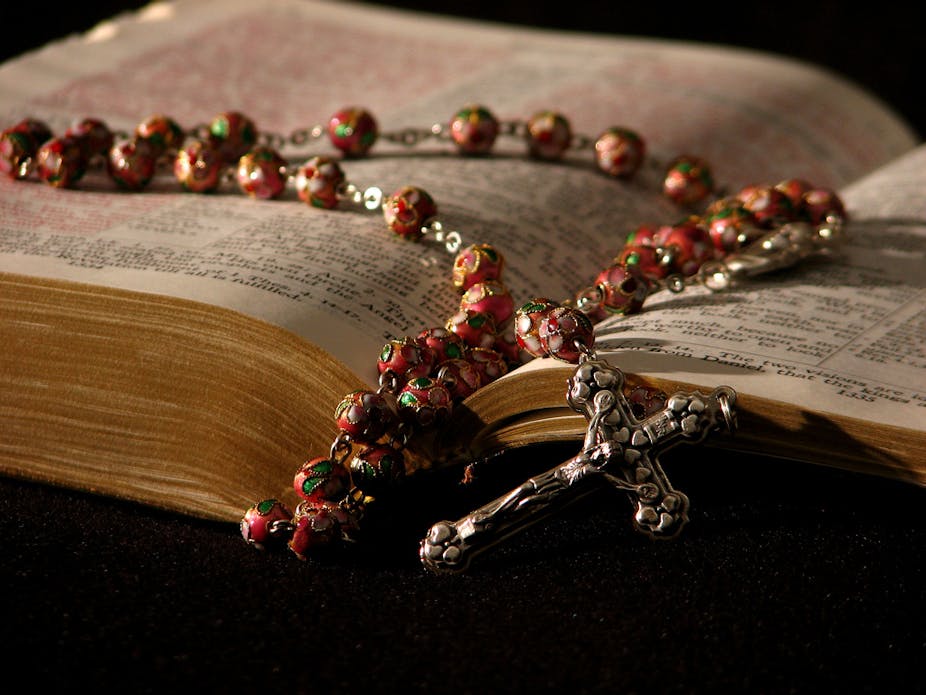For victims and their advocates, the Prime Minister’s announcement of a Royal Commission into the role of institutions in the abuse of children represents a long-awaited shift in the way Australia approaches child sexual abuse.
Politicians, church leaders and other public figures are all vocal in their condemnation of child abuse. This has become a fig leaf for the trenchant neglect of the needs and rights of child abuse survivors. Survivors are routinely unable to access effective mental health care. They find their complaints trivialised by police, the justice system and the churches.
The announcement was sparked by explosive evidence that sexually abusive Catholic priests have been concentrated in particular diocese such as Ballarat and the Hunter Valley. Investigations appear to have been stymied by both the church and the police.
The term “paedophile priests” has become common in media commentary. This suggests that the origins of clergy abuse lies with mentally disordered offenders who use their authority as clergy to molest children and avoid detection or prosecution. Sexual abusers can be highly motivated to abuse children and select their occupation accordingly. But it is too simple to blame institutional sexual abuse on a small number of prolific offenders.
Research shows that sexual abuse is more likely to occur in (and be ignored by) particular kinds of institutional cultures. In particular, male-dominated organisations that lack oversight and accountability can harbour a “barrack-yard” culture that promotes physical and sexual abuse. As Marie Keenan indicates in her 2012 book Child Sexual Abuse and the Catholic Church, organisational culture is a key reason the Catholic Church has a problem with the sexual abuse of children. The general mindset and power structure of the Church is feudal in origin and nature. Figures of authority are entitled to expect absolute deference from subordinates. Men have divinely sanctioned authority over women and children. There is little, if any, real interest in democratic decision-making.
By any measure, this creates a situation ripe for the development of cultures of abuse. In this environment, one or two charismatic perpetrators can draw adults and children within institutions into overlooking, colluding or perpetrating in the abuse. This can result in the development of clandestine networks of abusers within and across institutions and organisations that uphold the culture of sexual abuse. Hence sexual abusers can be incubated within institutions. A Royal Commission focused solely on identifying and hounding out “paedophiles” cannot fulfil the brief of protecting children and providing justice to victims. It must also address the institutional factors that promote sexual abuse.
It has been common for institutional authorities to silence children who complain of abuse, while protecting abusers. This becomes more complex in the case of clergy abuse. The religious affiliations of police, politicians and authority figures may draw them into the efforts of a church to suppress allegations. Some critics have described this pattern of institutional cover-up as evidence of “organised paedophilia”. The line between complicity and conspiracy is uncertain. Institutional sexual abuse may occur due disorganised rather than organised abuse: a lack of basic safeguards, protections or care that leave children vulnerable to repetitive sexual abuse.
But we cannot dismiss allegations of organised abuse and cover-ups out of hand. It is clear that institutions can harbour sexually abusive cultures and groups without detection. The report of the South Australian Mullighan Inquiry into children in state care was published in 2008. In the report, former state wards provided detailed accounts of groups of staff sexually abusing children in institutions and taking them to what Commissioner Mullighan described as “paedophile parties”. Priests, nuns and care staff were implicated. Like so many other inquiries of this nature, the report hinted at a degree of sexual abuse that has not received full public recognition.
It is rare that I agree with Fred Nile. However, he had a point when he suggested that the narrow terms of reference of the proposed NSW inquiry into alleged police protection of clergy abusers is the result of political “nervousness”. Allegations of institutional sexual abuse often implicate, in various ways, three of the most powerful organisations in society - political parties, the churches and police – while aggravating many others.
To put it bluntly, institutional sexual abuse is a political hornets’ nest. Julia Gillard should be congratulated for moving beyond the entrenched resistance to addressing the issue openly and transparently.
But the issues facing the proposed Royal Commission go beyond the challenge of screening for paedophilia and encouraging institutional responsiveness to sexual abuse. There are cultural problems within the church and other institutions, and indeed within the community more generally, that are linked to the abuse of children and need real, practical policy solutions.

